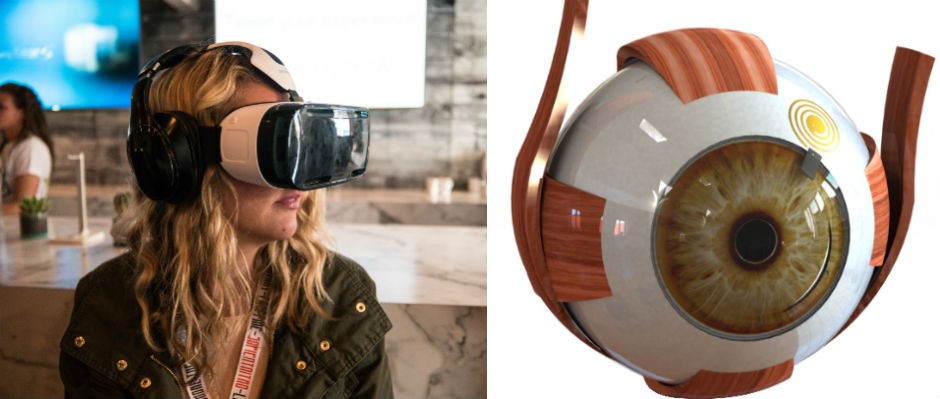Amir Molaei is a doctoral candidate in Mechanical Engineering. He holds an MSc degree in Mechatronics and a BSc in Mechanical Engineering both from K.N. Toosi University of Technology, Tehran, Iran. Amir's research is focused on the design, modelling and control of flexible robots to help surgeons operate inside the eye in a more precise and a less invasive way.
 Photo (left) by Nan Palmero | Right: 3D model of an eye
Photo (left) by Nan Palmero | Right: 3D model of an eye
Virtual reality is one of the most promising technologies for medical practitioners. The field of medicine is adapting this emerging technology for use in diagnosis, therapy, surgical planning and — more importantly — the training of medical students.
Like other highly demanding surgeries, ophthalmology will benefit greatly from virtual reality. The method has huge potential for both the surgeon and the patient.
Here are some possible areas in which virtual reality technology can impact ophthalmology.
Training eye surgeons and education
Virtual reality-based surgical simulations provide a safe environment in which a surgeon may repeatedly practice a procedure without impacting patient safety. They provide unique environments and surgical assessment techniques. The simulations also record the performance of the residents and evaluate their actions using an algorithm based on experienced surgeons.
Apart from its advantages in operations, virtual reality also provides better and more detailed investigations into the body’s organs by utilizing 3D models. Virtual reality offers an immersive environment for displaying the complex anatomy of the eye for training purposes, along with the progression and effect of eye diseases and the required procedures that could be adapted to treat these diseases.
Simulating eye disease
Visually impaired individuals have a different perspective of the surrounding world, and their access and navigation in a simple environment is a challenging task. Individuals who deal with visually impaired patients would be able to better support them if they have a better understanding — and can experience the effects — of vision loss.
Virtual reality provides a platform for experiencing diminished vision and the problems it causes in daily life. Researchers can use virtual reality to raise awareness about living with a visual impairment and to test new concepts for assistive devices.
Diagnosis and therapy for eye diseases
One of the most promising applications of virtual reality is creating performance tests that simulate real-life conditions. These situations involve complex scenes and motions. Virtual reality allows doctors to control the viewing condition and fine tune variables such as lighting and distance from the display. They can also adjust the contrast, size and speed of objects to design specific platforms for diagnosis and therapy of certain types of eye diseases.
Experts use virtual reality to address a lack of binocularity because they can carefully control the content seen through each lens. They can also work with the technology to diagnose glaucoma by evaluating the postural control in glaucoma patients while the patient responds to a virtual environment.
Surgical simulation and planning
Planning a surgical procedure is an essential part of successful treatment. This is another element where virtual reality can positively impact the medical industry because the technology enables the surgeon to plan operations. It provides 3D graphics of the organs and the surgeon can have a precise image of the anatomical structures undergoing surgery.
By having a patient-specific, physics-based surgical simulator, surgeons have a chance to practice operations on a model of the patient's eye before the real surgery.
About the author


